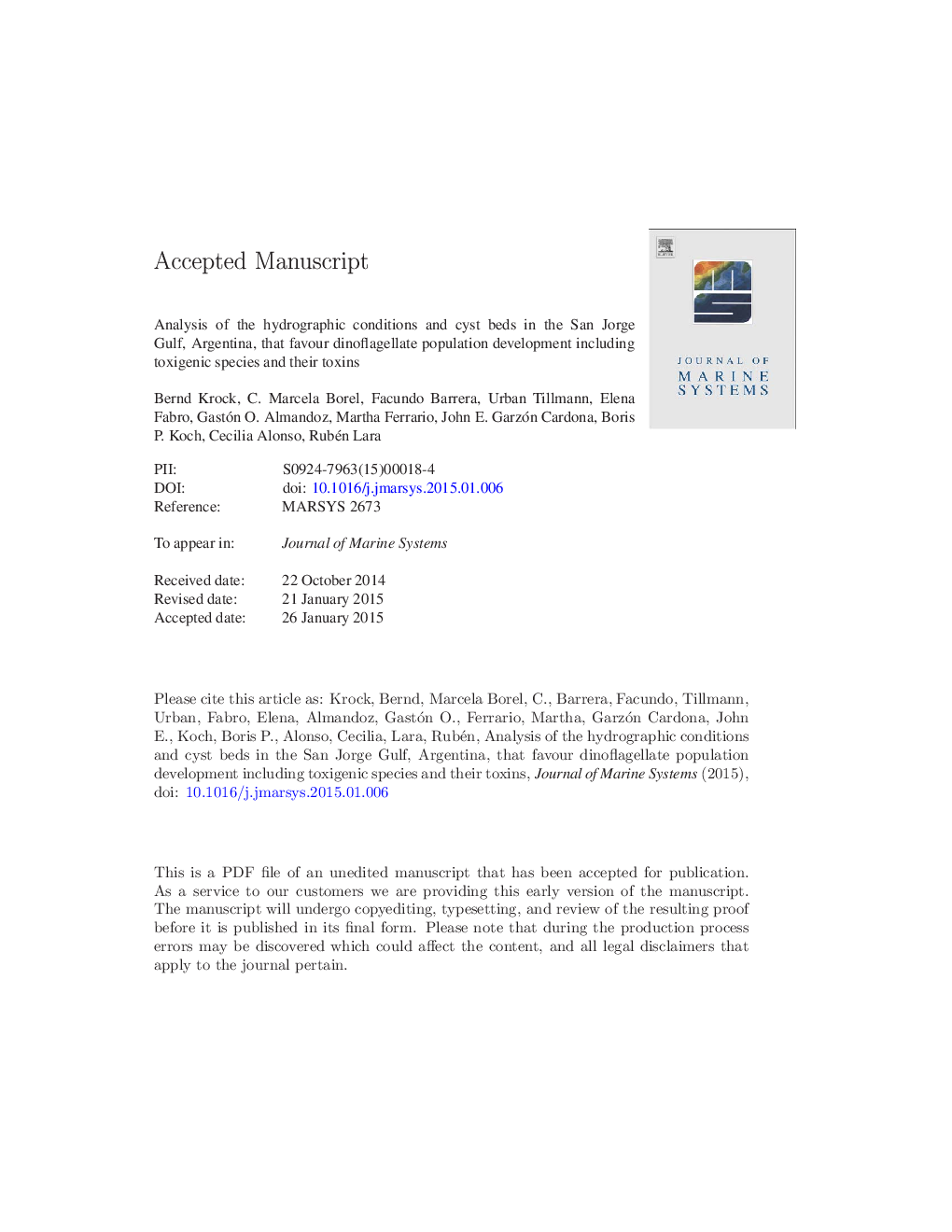| Article ID | Journal | Published Year | Pages | File Type |
|---|---|---|---|---|
| 6386716 | Journal of Marine Systems | 2015 | 59 Pages |
Abstract
The overlay of cooler nutrient enriched Beagle-Magellan water with warmer nutrient depleted shelf water and a strong stratification of the water column in the San Jorge Gulf region, Argentina, coincided with relatively high dinoflagellate abundances in April 2012, up to 34,000 cells Lâ 1. This dinoflagellate proliferation was dominated by Ceratium spp., but environmental conditions also favored to a lesser amount the occurrence of toxigenic dinoflagellates, such as Alexandrium tamarense and Protoceratium reticulatum, whose toxins were hardly detected in any other areas along the expedition transect of the R/V Puerto Deseado between 38 and 56°S (Ushuaia-Mar del Plata) in March/April 2012. Generally vegetative cells of A. tamarense and P. reticulatum co-occurred with their respective phycotoxins in the water column and their cysts in the upper sediment layers. Two strains of A. tamarense were isolated from the bloom sample and morphologically characterized. Their PSP toxin profiles consisted of C1/2, gonyautoxins 1/4 and to a lesser amount of neosaxitoxin and confirmed earlier data from this region. The ratios between autotrophic picoplankton and heterotrophic bacteria were higher in shelf waters in the north than in Beagle-Magellan waters in the south of San Jorge Gulf.
Keywords
Related Topics
Physical Sciences and Engineering
Earth and Planetary Sciences
Oceanography
Authors
Bernd Krock, C. Marcela Borel, Facundo Barrera, Urban Tillmann, Elena Fabro, Gastón O. Almandoz, Martha Ferrario, John E. Garzón Cardona, Boris P. Koch, Cecilia Alonso, Rubén Lara,
